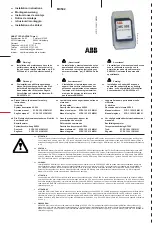
■
Determine the physical location of each drive within the robot. Location usually
is shown on the connectors to the drives or in the vendor documentation.
This task may not be required if NetBackup device discovery accurately
determines drive location within the robot.
■
Connect all drives and all robots.
■
Install SAN connecting hardware (for example, bridges, switches, or hubs).
■
If fiber is part of your configuration and you use a SCSI-to-fiber bridge,
determine the SCSI-to-Fibre Channel mapping for your tape devices.
Hard-wired SCSI IDs are converted to Fibre Channel logical unit numbers
(LUNs) that the hosts read. To ensure correct drive assignments, you should
know which LUNs map to which physical SCSI IDs. Use persistent LUN mapping
if possible.
Familiarity with the hardware and various vendor configuration tools help
you accomplish this task. See the vendor documentation for your bridge.
■
Record the physical configuration.
When you set up a Shared Storage Option configuration, record your hardware
information. Record the adapter, SCSI addresses, World Wide Names (WWNs),
and Fibre Channel LUNs to which you connected each drive. Also, record the
version levels of firmware and drivers.
■
Install and configure the appropriate drivers. See your vendor documentation
for instructions.
■
On UNIX or Linux servers, create any device files that are needed. Depending
on the operating system, a reconfiguration system start (
boot -r
) may create
these files automatically.
Create the device files for each drive; use the Fibre Channel LUNs of the drives
and adapters in the device file names. Add the names of the device files to your
notes to complete the correlation between device files and physical drive
location.
Use the NetBackup Device Configuration Guide and the man pages that are
available with the operating system.
■
On UNIX servers, customize the operating system by modifying the appropriate
system configuration files. This task requires knowledge of the system files
that use the Shared Storage Option environment and their formats. For
example, on Sun Solaris systems you may need to modify the sg, st, and HBA
driver files.
Modify the HBA driver files to bind Fibre Channel devices (WWN) to a specific
target ID. For procedures, see the operating system documentation.
■
For instructions on how to configure the HBA on Windows servers, see the
HBA documentation from the vendor.
Configuring the Shared Storage Option
About Shared Storage Option prerequisites
148
Summary of Contents for NetBackup
Page 1: ...Symantec NetBackup Shared Storage Guide UNIX Windows Linux Release 7 1 21159731 ...
Page 16: ...16 ...
Page 50: ...Managing AdvancedDisk Viewing disk reports 50 ...
Page 54: ...Toubleshooting AdvancedDisk Resolving an incorrect storage type problem 54 ...
Page 56: ...56 ...
Page 104: ...Configuring OpenStorage Setting NetBackup configuration options by using bpsetconfig 104 ...
Page 124: ...Managing OpenStorage About restoring from backup copies 124 ...
Page 131: ...SharedDisk option Chapter 14 Introducing SharedDisk 3 Section ...
Page 132: ...132 ...
Page 136: ...136 ...
Page 144: ...Introducing the Shared Storage Option Shared Storage Option terms and concepts 144 ...
Page 162: ...Using the Shared Storage Option About adding SSO configuration options 162 ...
















































